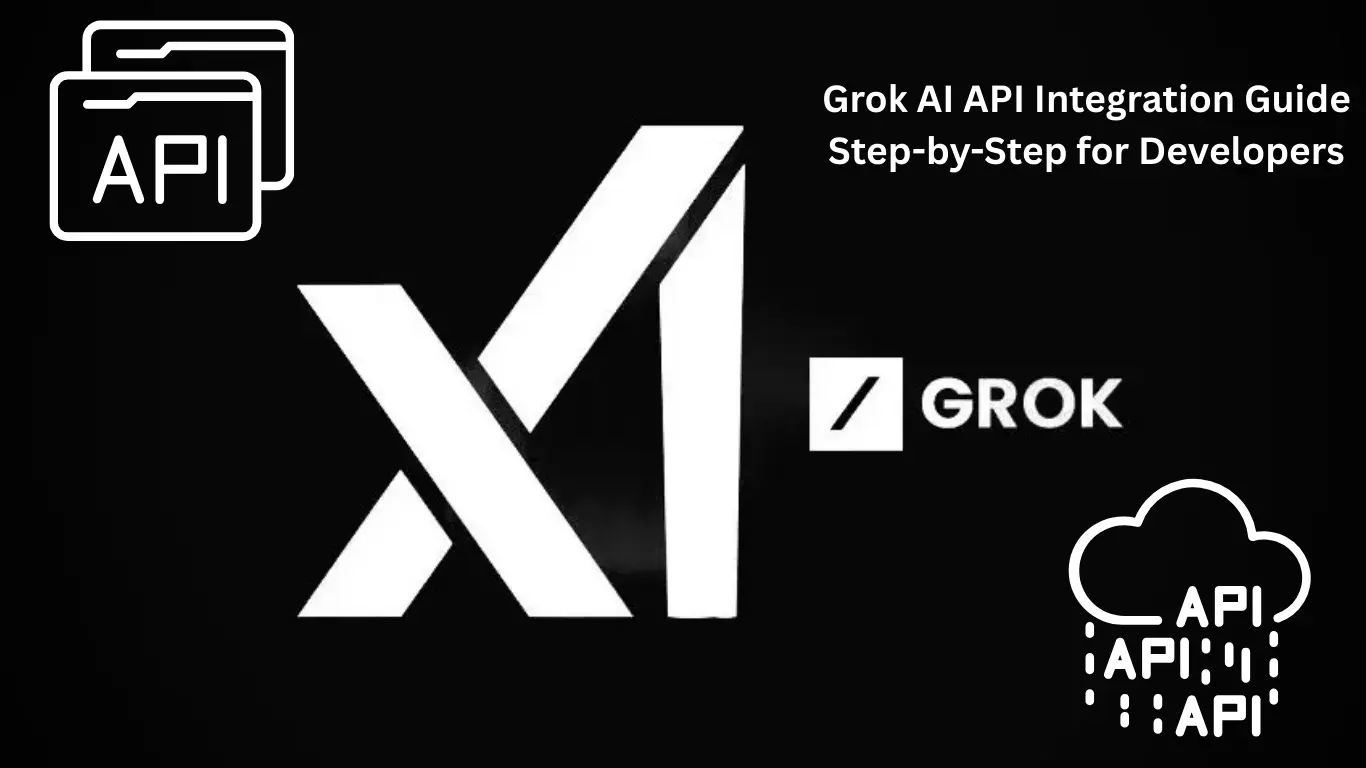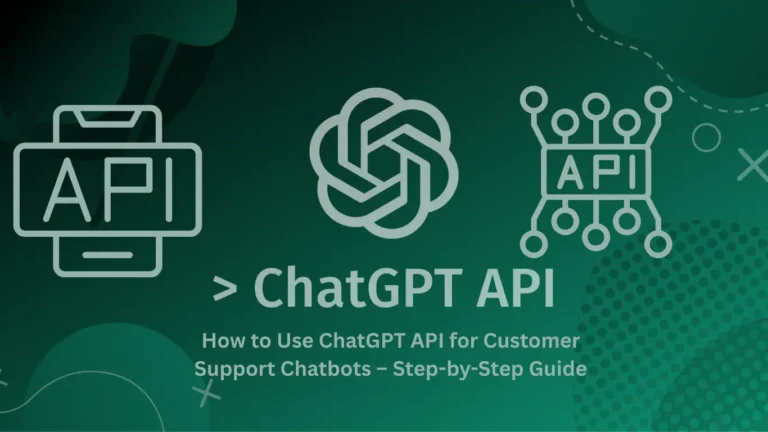Introduction
Grok AI API Integration Made Easy – If you’re a developer looking to integrate Grok AI into your app, you’re in the right place! In this guide, we’ll cover 5 simple steps to help you seamlessly set up the API.
Grok AI is one of the most innovative AI chat models, developed to provide real-time, intelligent responses across various platforms. Developers who wish to integrate Grok AI into their applications can leverage its API to build smart, AI-powered applications.
This guide will take you through a step-by-step approach to integrating Grok AI API into your application. Whether you’re working on a chatbot, a content generator, or a customer support tool, this tutorial will help you get started smoothly.

What is Grok AI?
Grok AI API Integration Made Easy – Grok AI is an advanced AI-powered chatbot model designed for real-time responses and enhanced conversational abilities. With Grok AI API integration made easy, developers can seamlessly integrate this powerful model into their applications, enabling context-aware, meaningful interactions powered by state-of-the-art Natural Language Processing (NLP) and machine learning algorithms.
How to Use ChatGPT API for Customer Support Chatbots – Step-by-Step Guide (2025)
Requirements for Grok AI API Integration
Before you start, ensure you have the following:
- An active Grok AI API key (You may need to sign up for access)
- A programming environment (Node.js, Python, etc.)
- Basic knowledge of REST APIs
- An application where you want to integrate Grok AI (e.g., a website, chatbot, or mobile app)
Step 1: Get Grok AI API Key
- Visit the official Grok AI Developer Portal.
- Sign up or log in to your account.
- Navigate to the API Access section and generate an API key.
- Save this key securely, as you will need it for authentication.
Step 2: Install Required Dependencies
Depending on your programming language, you need to install required dependencies.
For Node.js
If you are using Node.js, install axios to make HTTP requests.
npm install axios dotenvFor Python
If you are using Python, install requests:
pip install requests python-dotenv Step 3: Making API Requests
Example: Sending a Request using Node.js
require('dotenv').config();
const axios = require('axios');
const API_KEY = process.env.GROK_AI_API_KEY;
const API_URL = 'https://api.grok.ai/v1/chat';
async function chatWithGrok() {
try {
const response = await axios.post(
API_URL,
{ prompt: 'What is the future of AI?' },
{ headers: { 'Authorization': `Bearer ${API_KEY}` } }
);
console.log(response.data);
} catch (error) {
console.error('Error:', error);
}
}
chatWithGrok();Example: Sending a Request using Python
Ok now i will show you by sending a request using python
import os
import requests
from dotenv import load_dotenv
load_dotenv()
API_KEY = os.getenv("GROK_AI_API_KEY")
API_URL = "https://api.grok.ai/v1/chat"
def chat_with_grok():
headers = {"Authorization": f"Bearer {API_KEY}"}
data = {"prompt": "What is the future of AI?"}
response = requests.post(API_URL, json=data, headers=headers)
print(response.json())
chat_with_grok()Step 4: Handle API Responses
id: The request ID.
created: Timestamp of the response.
choices: Array containing the AI-generated responses.Example:
{
"id": "chat12345",
"created": 1711539200,
"choices": [
{ "message": "AI is shaping the future by revolutionizing various industries." }
]
}Step 5: Implement the API in a Web App
If you are developing a chatbot for a web application, you can integrate the API response into your frontend.
Example: Displaying Grok AI Response in HTML
<!DOCTYPE html>
<html>
<head>
<title>Grok AI Chat</title>
<script>
async function getGrokResponse() {
let prompt = document.getElementById("userInput").value;
let response = await fetch("/getGrokResponse", {
method: "POST",
headers: { "Content-Type": "application/json" },
body: JSON.stringify({ prompt })
});
let data = await response.json();
document.getElementById("response").innerText = data.message;
}
</script>
</head>
<body>
<input type="text" id="userInput" placeholder="Ask Grok AI...">
<button onclick="getGrokResponse()">Send</button>
<p id="response"></p>
</body>
</html>Ans This is Output
Step 6: Error Handling & Best Practices
1. Implement Error Handling
Always handle possible errors like rate limits, incorrect API keys, and network issues.
Example:
if (error.response) {
console.error('API responded with:', error.response.data);
} else {
console.error('Request failed:', error.message);
}2. Optimize API Calls
- Cache responses, when possible, to reduce API usage.
- Use debouncing to prevent excessive API requests from UI inputs.
- Implement retry mechanisms in case of temporary failures.
3. Secure Your API Key
- Never expose your API key in frontend code.
- Use .env files and server-side authentication to protect sensitive data.

Conclusion
Grok AI API is a powerful tool for developers looking to integrate AI-driven responses into their applications. By following this step-by-step guide, you can successfully integrate Grok AI into your chatbot, website, or mobile app.
If you want to explore more about AI integrations, stay tuned for our upcoming tutorials!
Now you know how Grok AI API Integration Made Easy. Start implementing it today!
Did you find this guide helpful? Share your experience in the comments below


Great breakdown of the GrokGrok AI API Comment AI API integration process! The step-by-step approach makes it much easier for developers to follow along, especially the error handling and best practices section, which is often overlooked. Do you have any recommendations for optimizing response times when making multiple API calls in a real-time application?
Nice walkthrough! I appreciate the focus on security and error handling—those are often glossed over but critical when deploying in production.
Really appreciated the clear breakdown of steps here—especially the inclusion of both Python and Node.js examples. I found the security tips at the end particularly helpful since that’s often overlooked in API tutorials.
Really appreciate how this guide breaks down both Node.js and Python implementations — it’s rare to find tutorials that cater to multiple stacks. One suggestion: it might be helpful to add a troubleshooting section for common errors during the request phase.
I like how you emphasized the importance of error handling and optimizing API calls. As a developer, it’s easy to overlook these factors, but they’re crucial for building robust, production-ready applications.
Appreciate the clean walk-through. I’m building a customer support chatbot and the HTML example helped me visualize the final output more clearly.